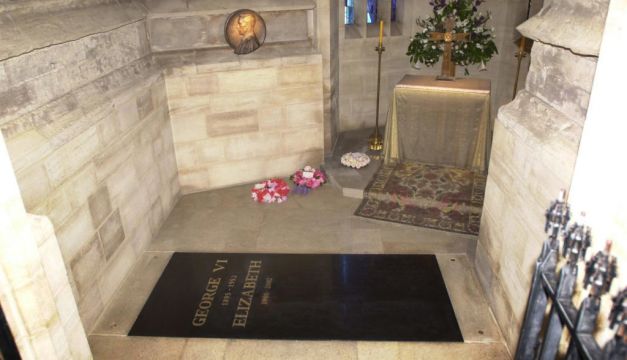Visitors will be able to view the burial site of Britain's Queen Elizabeth from next week as Windsor Castle reopens to the public.
People can pay their respects at St George’s Chapel from September 29th, just over a week after the late monarch was laid to rest.
Elizabeth’s name has been inscribed alongside her mother’s, father’s and husband’s on the ledger stone in the George VI Memorial Chapel.
She was laid to rest with Prince Philip on Monday evening in a private service attended by King Charles and the British royal family, after her state funeral at Westminster Abbey and committal service in Windsor.
Buckingham Palace said the inscription on the ledger stone in the George VI Memorial Chapel now has the names of the late queen, her parents and Philip, along with their years of birth and death.
The new stone has replaced the black stone slab set into the floor which had featured the names George VI and Elizabeth in gold lettering.
The stone now lists “George VI 1895-1952” and “Elizabeth 1900-2002” followed by a metal Garter Star and then “Elizabeth II 1926-2022” and “Philip 1921-2021”.
All four royals were members of the Order of the Garter, which has St George’s Chapel as its spiritual home.
The chapel will reopen to visitors later next week on all days the castle is open to the public, excluding Sundays when it is only open for worshippers.
Entry to the castle is £28.50 () for adults on Saturdays and £26.50 () on other days, according to the website.
The royal family is continuing its period of mourning for the queen, to be observed until seven days after the funeral.
Charles is believed to have flown to Scotland with his wife, Camilla, to grieve privately.
Members of the royal family are not expected to carry out official engagements, and flags at royal residences will remain at half-mast until 8am after the final day of royal mourning.
‘May flights of Angels sing thee to thy rest.’
In loving memory of Her Majesty The Queen.
1926 - 2022 pic.twitter.com/byh5uVNDLq— The Royal Family (@RoyalFamily) September 19, 2022
On Wednesday, counter-terrorism police in the UK confirmed they received more than 800 reports from the public about suspicious activity during the operation after the death of the queen – double the average level.
Head of counterterrorism policing Matt Jukes said one in eight of the reports made during the mourning period, known as Operation London Bridge, is “actively being used as intelligence” by investigators.







